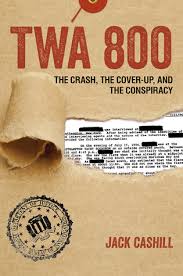Trump and the Art of the Insult
![]()

Order Jack Cashill's latest book, TWA 800: The Crash, the Cover-Up, and the Conspiracy
![]()

About Silenced: Flight 800
and the Subversion
of Justice (DVD) -
-Buy the Silenced DVD-
![]()
© Jack Cashill
January 17, 2018 - WND.com
Joel Gilbert’s new film, “Trump: The Art of the Insult,” is on one level a hilarious trip down memory lane, especially for early Trump backers.
With minimal commentary, Gilbert shows Trump being Trump as he slices and dices his way through the Republican primaries and then somehow manages to outwit the deep state to beat Hillary Clinton in the general.
On another level, though, Gilbert’s movie invites the viewer to consider “insult” as an art form and assess Trump as a practitioner of the art.
As someone who grew up in Newark, New Jersey, went to high school in New York City, and spent much too much of my adolescence in inner city playgrounds, I have a certain instinctive appreciation of the art.
Having more confidence in my verbal gifts than in my pugilistic ones, I learned the art early and well. I also learned the rules of the game.
Trump, I saw, had a major advantage over his Republican rivals. They were playing under the timid guidelines established for Republicans by a media that generally despised them.
Trump was playing by New York City playground rules. He was more confident than he was skilled, but confidence goes a long way in the playground.
A week before Trump declared, I started a WND article with the sentence, “The Republican nominee for president will be that candidate who best understands there is no future in apologizing.”
I did not even know Trump was running. By using the word “Mexicans” and “rapists” in the same paragraph in his campaign announcement, he violated the guidelines that the media established for Republicans.
This violation is not what jazzed his followers. What jazzed them and attracted new ones is that he refused to apologize.
The media have their own way of branding the enemy, no brand more potentially lethal than “racist,” although “sexist” and “homophobic” have also worked well.
Trump ignored their branding and fought back. The media were—and still are—incapable of accepting this breach of etiquette.
As Gilbert masterfully shows, Trump then started not just insulting his primary opponents but branding them, none more successfully than he did Jeb Bush.
To insult effectively, you have to do it with a smile. You have to make it fun. You have to invite the audience in on the fun.
In a playground confrontation, you win when the onlookers laugh at your remarks. You’re in for trouble if they instinctively say “ooooo” and start backing away.
Trump understood this where others did not, especially Bush. Trump’s brand for Bush—“low energy Jeb”—was spot on. He identified Bush’s weakness as a candidate and seized on it.
The insult worked particularly well because it crossed no line. Trump undermined Bush as a candidate but not as a man. With no gift at all for rejoinder, Bush responded by calling Trump a “jerk.” Oooooo!
None of Trump’s other branding insults in the primary were quite as effective. “Lyin Ted Cruz” took too much explaining and risked alienating Cruz’s supporters. “Little Marco Rubio” was too personal and failed to address Rubio’s weaknesses.
Rubio fought back playground style with his “small hands” remarks, but here he crossed a line into sexual innuendo that unsettled too many Republicans.
Much more effective was Trump’s “crooked Hillary.” The phrase worked for two reasons. One is that the word “crooked” is somewhat comical. The other is that even Hillary supporters suspected she was, in fact, crooked.
Then, too, crookedness is not something inherently female. Where Trump has gone astray is attacking women for their appearance—Carly Fiorina and Mika Brzezinski most notably.
To master the art of the insult one has to understand that females play by different rules. One rule is that looks are definitely off limits, especially matters of weight.
That does not mean that females are off limits. Trump’s single most effective bit of personal branding is his “Pocahontas” riff on Sen. Elizabeth Warren.
To be sure, he did not conceive it. Conservatives have been using the phrase for years. The media simply ignored them.
They could not ignore Trump. When he called Warren “Pocahontas” they had to respond. They instinctively pulled out the race flag and ran it up the flagpole. No one other than their fellow travelers saluted.
Trump was calling Warren out on her obvious hypocrisy. Until he did, most ordinary Democrats were unaware that she had faked her way through her professional career as an imaginary Indian.
Now they know. Now they know too why Warren will never be president.
The jury is still out on “sh**hole.” On the one level, it has prompted a great deal of fake outrage. On another level, it will make it very hard for anyone to use the phrase “developing nation” with a straight face in the foreseeable future.
Perhaps Trump’s most successful branding insult—and the one that truly drives his media critics bonkers—is “fake news.”
The media threw it at him, and he threw it right back at them, and it stuck because it was so true. That is the art of the insult in a nutshell.
View movie trailer:

